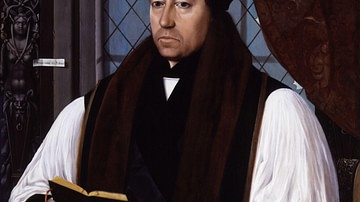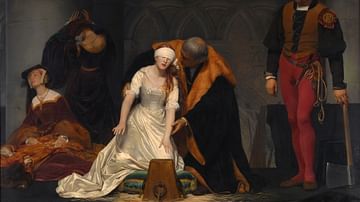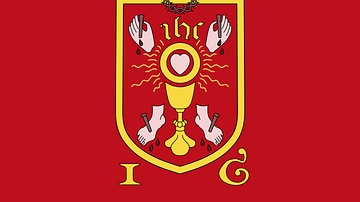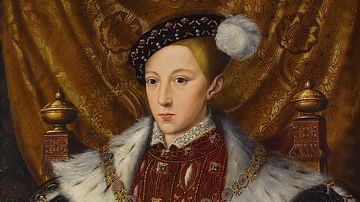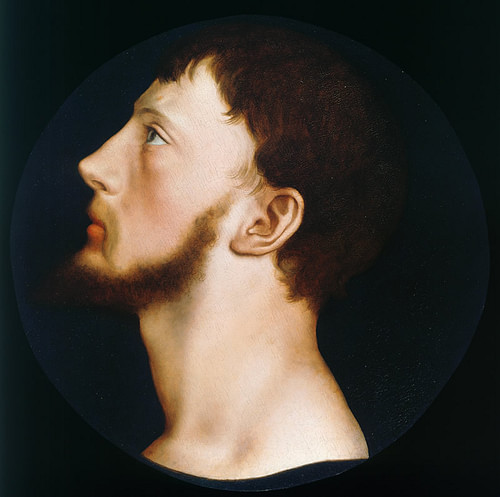
The Wyatt Rebellion of January-February 1554 CE saw Sir Thomas Wyatt the Younger lead a group of several thousand Kent rebels in a march on London with the primary aim of preventing Mary I of England (r. 1553-1558 CE) from marrying Spain's Prince Philip (l. 1527-1598 CE). There was, too, the secondary aim - never openly declared - of replacing Mary with her younger half-sister Elizabeth Tudor (b. Sep. 1533 CE). The rebels were also motivated by the fall in living standards in England caused by inflation, food shortages, the decline in trade (especially of cloth), and several waves of deadly epidemics. The rebellion failed thanks to Mary's armed response and a general lack of support from the people of London. The leaders, including Wyatt, were executed and so was Mary's cousin Lady Jane Grey (b. Oct. 1537 CE) just in case she became a figurehead for future rebellions. For the same reason, Elizabeth was detained in the Tower of London. Mary then went on to vehemently persecute her enemies whom she identified as Protestant heretics, thereby earning her lasting nickname 'Bloody Mary'.
Mary I's Succession
Mary I of England had succeeded her brother Edward VI of England (r. 1547-1553 CE), although she had almost been the victim of a coup d'etat in July 1553 CE when John Dudley, the Earl of Northumberland (l. 1504-1553 CE) tried to install Mary's cousin Lady Jane Grey (1537-1554 CE) as queen. Lady Jane was Protestant and Mary Catholic so that each represented the interests of the two sides which had split England ever since Mary's father Henry VIII of England (r. 1509-1547 CE) had separated the Church in England from Rome and the Pope. As it turned out, the vast majority of nobles and the commoners preferred to honour Henry VIII's wish that Mary succeed Edward if he were without children. Legitimacy and direct ties of royal blood triumphed over any religious considerations. However, Mary convinced herself that her initial popularity was because she proposed to return her kingdom to Catholicism by reversing the English Reformation that had been ongoing under her two predecessors, starting with the First Act of Repeal of 1553 CE; she had, thought Mary, been chosen by both the people and God. However, the air of optimism that had surrounded Mary's succession was soon to become fouled by the treacherous stench of rebellion.
Causes of the Rebellion
The causes of the Wyatt Rebellion may be summarised as the desire:
- to prevent Queen Mary I from marrying Prince Philip of Spain.
- to remedy grievances caused by the poor state of the economy.
- to improve the personal wealth and status of certain nobles.
- to replace Catholic Mary with her Protestant half-sister Elizabeth.
The growing sense of nationalism in England was one of the underlying causes of the Wyatt Rebellion, named after its principal leader Sir Thomas Wyatt (b. 1521 CE). When, on 29 October 1553 CE, the queen announced her betrothal to Prince Philip, son of King Charles V of Spain (r. 1516-1556 CE), some people considered this a capitulation of England's independence, a slur upon its as yet young national identity. Spain was a Catholic country and England's enemy number one. It was also growing ever more powerful thanks to the riches it plundered from the New World. People, too, remembered the uncomfortable truth that Mary's mother, Catherine of Aragon (1485-1536 CE), was the daughter of King Ferdinand II of Aragon (r. 1479-1516 CE) and Queen Isabella of Castile (l. 1451-1504 CE). There were rumours that a Spanish prince would one day become king of England and then he would suck his adopted country dry of all its wealth merely for his own ambitions of empire. There might even be an invasion of England. In short, the imminent 'Spanish Marriage' was unpopular.
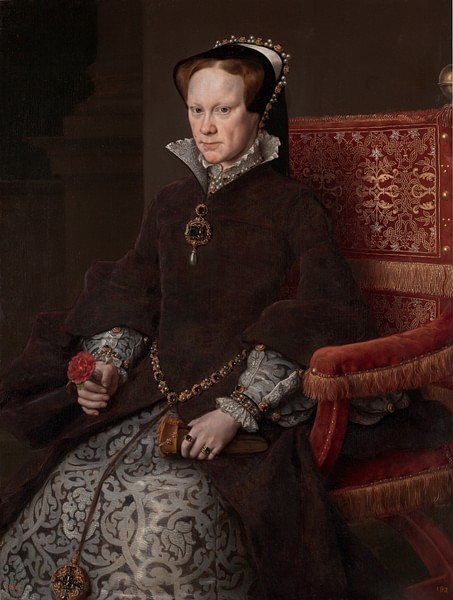
The conspirators also sought to replace Mary with Elizabeth as queen although this aim was not openly declared, perhaps because of the secrecy needed to launch the rebellion successfully, because making such a claim would lead to execution if the rebellion failed, and because not all the leaders (or followers) of the rebellion may have agreed to such a radical objective. There is also the problem that, once captured, the rebel leaders may have simply lied about their original objectives. Wyatt, prior to his execution, for example, promised the queen he had meant no harm to her personally but only those evil councillors at court that swayed her opinion. It was probably true that the rebel did not wish to bring religious matters into the affair as this would have lost them support. As Wyatt himself said to his fellow conspirators, "You may not so much as name religion for that will withdraw from us the hearts of many." (Woodward, 28).
However, it is perhaps significant that the areas of the original rebellions, particularly Kent, were known centres of Protestantism. And the essential fact was that Protestant England now had a Catholic queen and if she were to marry the future king of Catholic Spain then there was little hope for Protestant Reformists. A return to Catholicism might perhaps have held little importance to most people, and the religion had, of course, been installed in England for centuries prior to Henry VIII's dramatic change in direction. Perhaps more significant, then, were the economic consequences of returning to Catholicism: nobles did not want to give back the lands that had been confiscated from the Church and the now-defunct monasteries during the reigns of Henry VIII and Edward VI.
If it had been the ultimate objective to replace Mary, then the next stage was for Elizabeth to marry the Earl of Devon, Edward Courtenay (c. 1527-1556 CE), the great-grandson of Edward IV of England (r. 1461-1470 CE). There was, then, an underlying belief that a woman should not rule in her own right and that she should certainly not fall prey to a foreign monarch who would use England for his own ends. As Wyatt put it, he did not want to see England become 'a cockleboat towed by a Spanish galleon' (Cavendish, 283). Added to this argument of national pride was the poor state of the country's economy. Throughout the last decades, Mary's subjects had to suffer inflation, currency debasements, a falling off of European trade, food shortages, new duties on goods like cloth, wine and beer, and waves of plague and influenza - the most fatal in three centuries. Also to be considered is the motivation of some nobles to use the rebellion as a means to improve their own estates and titles.
The Rebels March
The rebels began their plans as early as November 1553 CE and there were to be four simultaneous uprisings, all taking place on Palm Sunday, 18 March 1554 CE. There was to be one in Devon led by Courtenay and/or Sir Peter Carew (c. 1514-1575 CE), a Member of Parliament for Devon. Another was planned for Leicestershire which the Duke of Suffolk, the father of Lady Jane Grey would lead. The third was to be in the Welsh borders and be led by Sir James Croft (c. 1518-1590 CE) a nobleman from Hertfordshire. The fourth would be in Kent and led by the capable military man and Member of Parliament Sir Thomas Wyatt the Younger. Wyatt was from a well-connected family, his namesake father was the famed poet who had served at the royal court as a diplomat. The uprisings would be supported by the arrival of a French fleet and all four would converge on London. Unfortunately for the conspirators, word got out of the scheme and they were forced to bring forward the timing of the rebellion. It was later discovered that Carew had been the one to reveal the plans. The result of this change of timing was that local sheriffs and councils were forewarned and three of the four rebellions never really materialised, although Suffolk did attempt to take Coventry.
One uprising, then, did proceed as planned. A rebel army from Kent led by Wyatt marched on London on 25 January 1554 CE to stop the 'Spanish Marriage'. Wyatt and the other leaders of the rebellion believed that once at the capital, their numbers would be swelled by thousands of other disgruntled citizens. Indeed, early on a hopelessly small force sent by the government to disband the rebels actually joined them. Wyatt had experience of the wars in France, and, a firm Protestant, he had even defended the interests of Edward VI when riots had broken out in Kent in 1549 CE. Wyatt had sided with Mary during the Lady Jane Grey affair but now news of the 'Spanish Marriage' had turned his loyalties. This military experience perhaps explains why the rebels were able to force a royalist army led by the Duke of Norfolk, into retreat. A number of Royal troops (Whitecoats) even joined Wyatt's cause. The rebels then took Rochester and Dartford; nothing, it seemed, could now stop them reaching London.
Twice royal heralds offered pardons to the rebels if they disbanded but the offers were refused. The situation was so serious that Mary ordered the destruction of the bridges across the River Thames but she herself remained in her capital and gave a rousing speech to the public gathered at London's Guildhall. The queen reassured the people that she was "her father's daughter and her kingdom's wife" (Jones, 240) and London would hold firm. Her refusal to leave the capital was a brave one but privately, the queen must have wondered if there were any traitors within her own court.
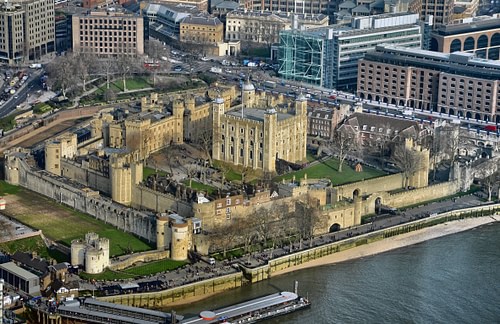
Consequences of the Rebellion
The major consequences of the Wyatt Rebellion were:
- The execution of 200 rebels, including Wyatt.
- The execution of Lady Jane Grey.
- The imprisonment of Elizabeth Tudor.
- The decision by Parliament to reduce Prince Philip's powers when king.
- The determination of Mary I to step up her persecution of Protestants.
Ultimately, around 200 rebel leaders were executed, 46 being hanged in a single day, and then, on 11 April, Wyatt was given the terrible traitor's death: hanged, drawn, and quartered. However, most of the rebel commoners were pardoned or got away with a fine for fear of inciting a second rebellion. Even Sir James Croft got off with a pardon nine months later, and Edward Courtenay was exiled to Venice.
The rebels might only have wished to see off a possible Spanish takeover, some of the leaders may even have truly wanted to dethrone Mary but the queen herself was convinced that the rebellion had really been aimed at restoring Protestantism. As Mary said, the anti-foreign sentiment was "but a Spanish cloak to cover their pretended purpose against our religion" (Brigden, 202). It was also true that Wyatt had promised to release those imprisoned for their religious beliefs. The queen, therefore, turned her attention to prominent non-Catholics.
Protestant Lady Jane Grey, who had been confined in the Tower of London since Northumberland's failed coup, was executed on 12 February 1554 CE as Mary could not afford to host a living figurehead for any future rebellion. The Duke of Suffolk was also executed, his turn came on 23 February.
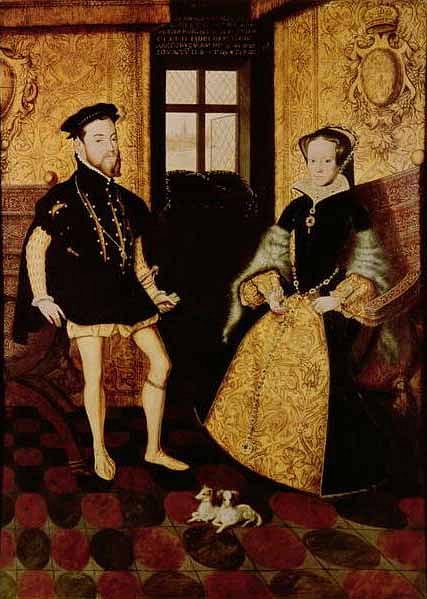
After the rebellion, Mary became much more ruthless with her enemies, who for her, were now all Protestants. The official line was that the Wyatt Rebellion had wanted to end Catholicism in England, a much more palatable motive than Mary having to admit that her people did not approve of her husband. Over the remaining years of her reign, 287 believers - men and women - were burnt at the stake over a four-year period. Amongst these were the old archbishop of Canterbury, Thomas Cranmer (served 1533-55 CE) and the prominent bishops Hugh Latimer and Nicholas Ridley. However, these public executions only served to stoke the fires of resentment against the queen who now became known as 'Bloody Mary'.
Finally, Mary suspected Princess Elizabeth of being involved in the rebellion - even if her sister had made no public statements on either the Reformation or 'Spanish Marriage' - and so she was detained in the Tower on 17 March 1554 CE. Two months later, Elizabeth was moved on to Woodstock in Oxfordshire where she was kept under house arrest. The next year the two sisters reconciled and Elizabeth was allowed her freedom back. When Mary died of stomach cancer on 17 November 1558 CE, her sister became Elizabeth I of England (r. 1558-1603 CE), crowned on 15 January 1559 CE. Elizabeth would restore Protestantism but her greatest challenge came from abroad as Philip, now King Philip II of Spain (r. 1556-1598 CE) saw the golden opportunity to attack England and bring it back into the Catholic fold.
